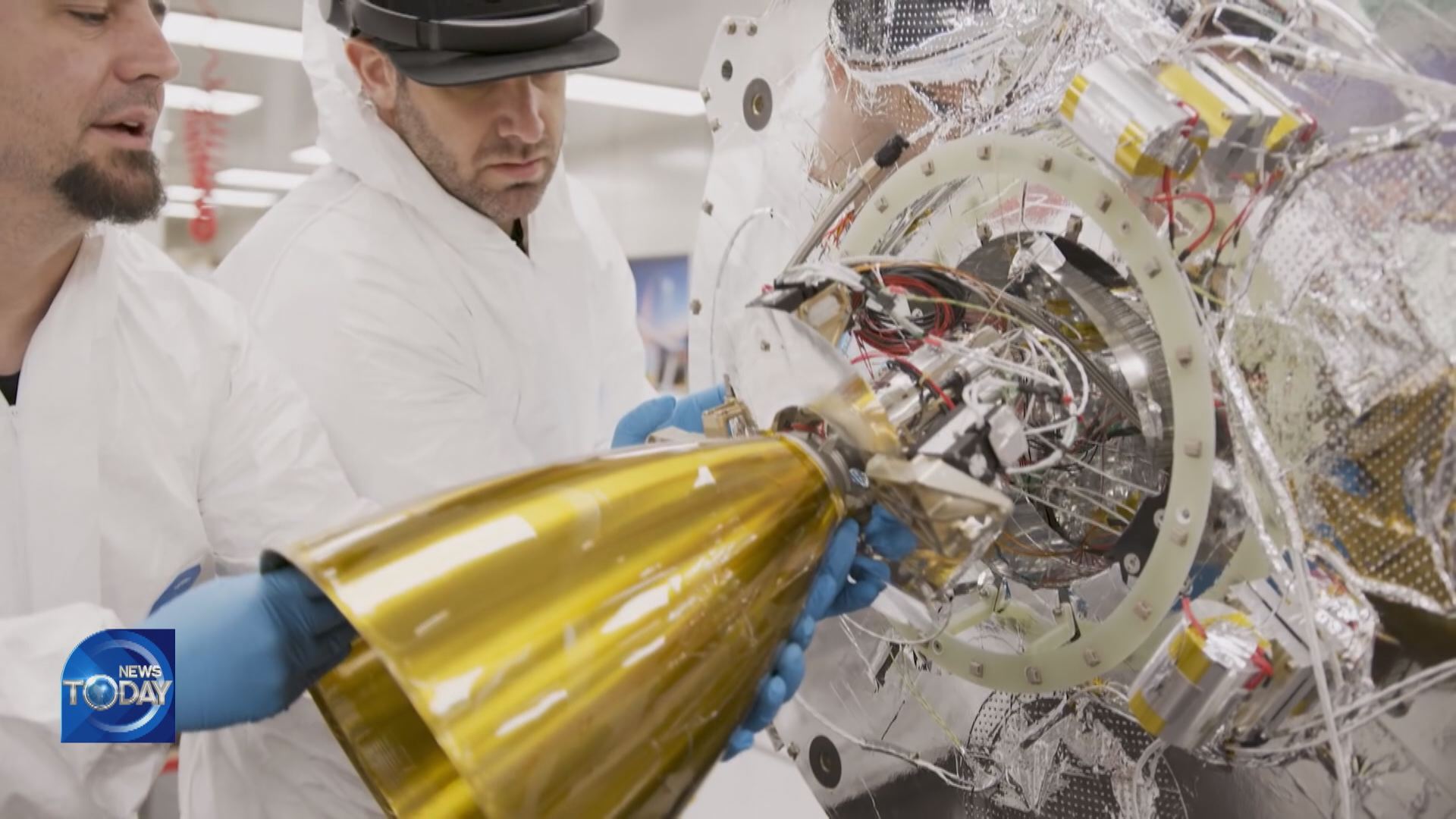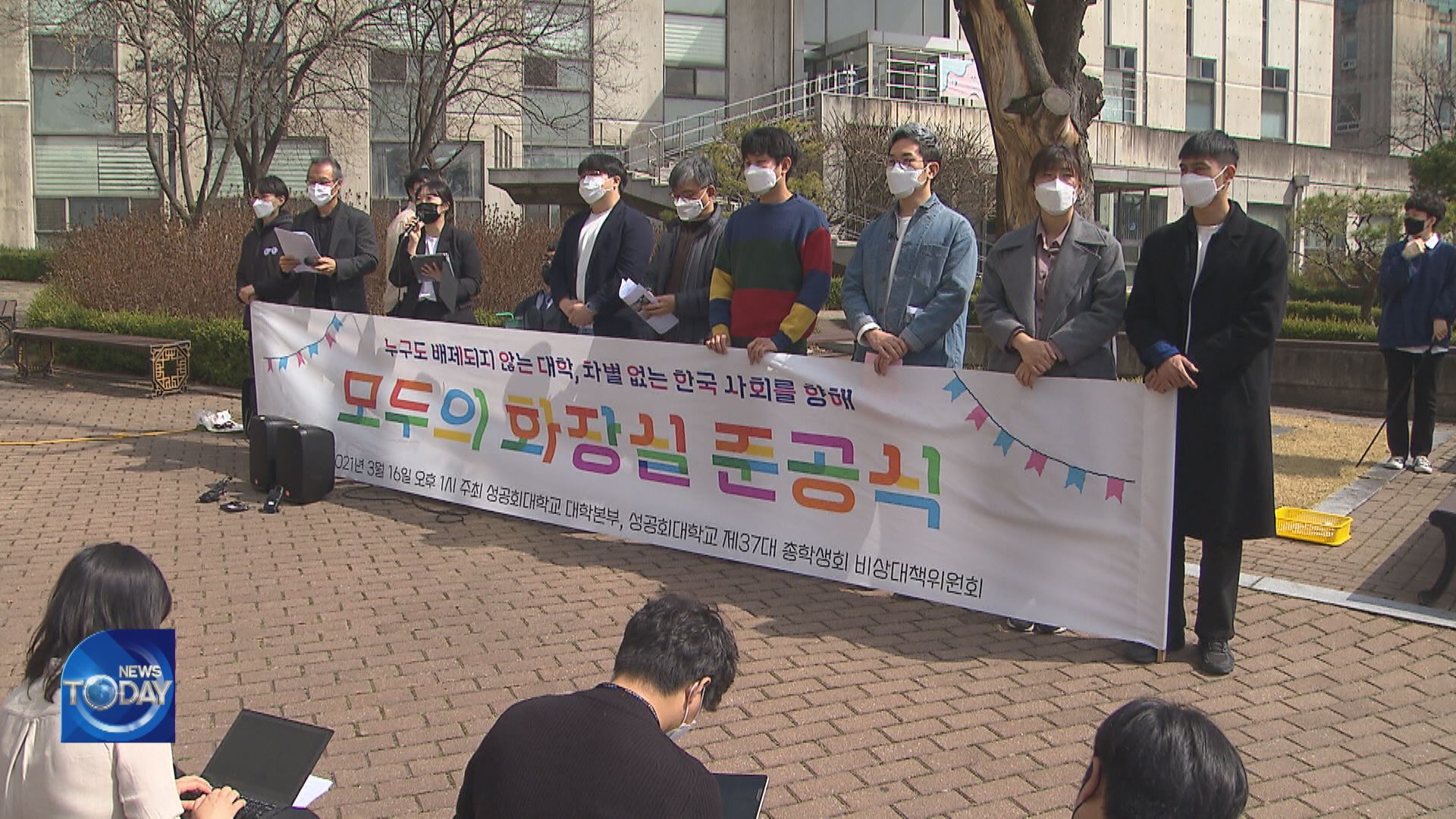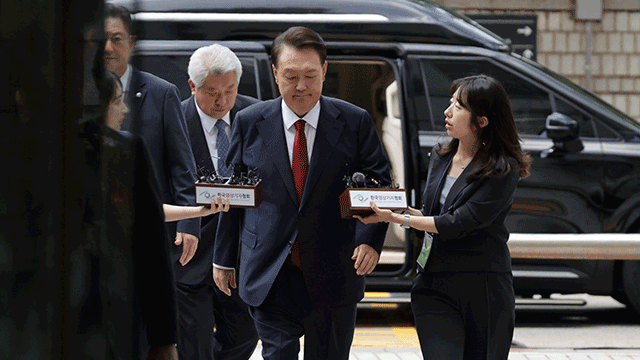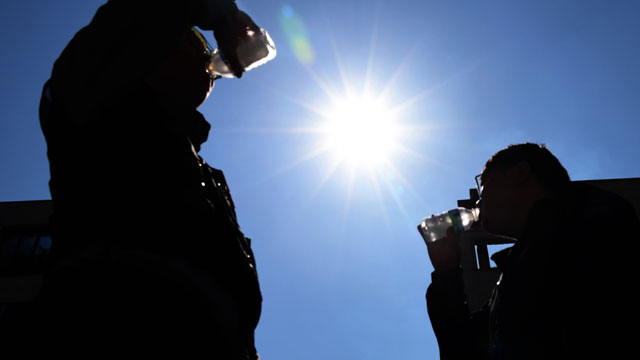GOV’T TO SUPPORT SPACE TECHNOLOGIES
입력 2022.03.17 (15:19)
수정 2022.03.17 (16:46)
읽어주기 기능은 크롬기반의
브라우저에서만 사용하실 수 있습니다.
[Anchor Lead]
The Korean government has vowed support for private firms developing small launch vehicles in a bid to nurture the space industry. With demand for private-sector space technologies using low Earth orbit satellites expected to surge, the government is determined to create Korea's own "Space X."
[Pkg]
Space X, an American private space exploration company led by Elon Musk. It has launched some two thousand low Earth orbit telecommunication satellites using its own rockets. The firm also provides a satellite Internet service dubbed Starlink. Some 30 corporations worldwide including those based in the U.S., Japan, China and Spain have already established presence in the small launch vehicle market, which is predicted to grow exponentially in the coming years. By orbiting the Earth close to its surface, small launch vehicles provide more stable telecommunication networks compared to ground stations. Moreover, they can also provide cloud and precision observation services.
[Soundbite] (Staff at Low Earth orbit satellite developing company) : "Small launch vehicles can provide diverse services, such as satellite navigation and telecommunication and Earth observation. Rather than thinking of space exploration as something difficult, it's about time we ponder what we can do in space."
The South Korean government has also embarked on nurturing the small launch vehicle sector led by private firms. It will invest around 27.8 billion won between 2022 and 2027 in the development of two-stage small launch vehicles. The idea is to have private firms develop a small engine and combine it with the 75-ton engine developed by the Korea Aerospace Research Institute and load it all onto the Nuri space rocket to create a two-stage launch vehicle.
[Soundbite] Lee Jun-bae(Ministry of Science and ICT) : "We aim at complete development and launch using small engines to be developed by private firms and ultimately complete two-stage small launch vehicles."
The global space industry is predicted to reach one trillion dollars by 2040. By providing support to the private sector in the space industry, the Korean government is determined to bridge a 20-year gap in the launch vehicle technology and a 10-year gap in the satellite technology with U.S. companies.
The Korean government has vowed support for private firms developing small launch vehicles in a bid to nurture the space industry. With demand for private-sector space technologies using low Earth orbit satellites expected to surge, the government is determined to create Korea's own "Space X."
[Pkg]
Space X, an American private space exploration company led by Elon Musk. It has launched some two thousand low Earth orbit telecommunication satellites using its own rockets. The firm also provides a satellite Internet service dubbed Starlink. Some 30 corporations worldwide including those based in the U.S., Japan, China and Spain have already established presence in the small launch vehicle market, which is predicted to grow exponentially in the coming years. By orbiting the Earth close to its surface, small launch vehicles provide more stable telecommunication networks compared to ground stations. Moreover, they can also provide cloud and precision observation services.
[Soundbite] (Staff at Low Earth orbit satellite developing company) : "Small launch vehicles can provide diverse services, such as satellite navigation and telecommunication and Earth observation. Rather than thinking of space exploration as something difficult, it's about time we ponder what we can do in space."
The South Korean government has also embarked on nurturing the small launch vehicle sector led by private firms. It will invest around 27.8 billion won between 2022 and 2027 in the development of two-stage small launch vehicles. The idea is to have private firms develop a small engine and combine it with the 75-ton engine developed by the Korea Aerospace Research Institute and load it all onto the Nuri space rocket to create a two-stage launch vehicle.
[Soundbite] Lee Jun-bae(Ministry of Science and ICT) : "We aim at complete development and launch using small engines to be developed by private firms and ultimately complete two-stage small launch vehicles."
The global space industry is predicted to reach one trillion dollars by 2040. By providing support to the private sector in the space industry, the Korean government is determined to bridge a 20-year gap in the launch vehicle technology and a 10-year gap in the satellite technology with U.S. companies.
■ 제보하기
▷ 카카오톡 : 'KBS제보' 검색, 채널 추가
▷ 전화 : 02-781-1234, 4444
▷ 이메일 : kbs1234@kbs.co.kr
▷ 유튜브, 네이버, 카카오에서도 KBS뉴스를 구독해주세요!
- GOV’T TO SUPPORT SPACE TECHNOLOGIES
-
- 입력 2022-03-17 15:19:52
- 수정2022-03-17 16:46:23

[Anchor Lead]
The Korean government has vowed support for private firms developing small launch vehicles in a bid to nurture the space industry. With demand for private-sector space technologies using low Earth orbit satellites expected to surge, the government is determined to create Korea's own "Space X."
[Pkg]
Space X, an American private space exploration company led by Elon Musk. It has launched some two thousand low Earth orbit telecommunication satellites using its own rockets. The firm also provides a satellite Internet service dubbed Starlink. Some 30 corporations worldwide including those based in the U.S., Japan, China and Spain have already established presence in the small launch vehicle market, which is predicted to grow exponentially in the coming years. By orbiting the Earth close to its surface, small launch vehicles provide more stable telecommunication networks compared to ground stations. Moreover, they can also provide cloud and precision observation services.
[Soundbite] (Staff at Low Earth orbit satellite developing company) : "Small launch vehicles can provide diverse services, such as satellite navigation and telecommunication and Earth observation. Rather than thinking of space exploration as something difficult, it's about time we ponder what we can do in space."
The South Korean government has also embarked on nurturing the small launch vehicle sector led by private firms. It will invest around 27.8 billion won between 2022 and 2027 in the development of two-stage small launch vehicles. The idea is to have private firms develop a small engine and combine it with the 75-ton engine developed by the Korea Aerospace Research Institute and load it all onto the Nuri space rocket to create a two-stage launch vehicle.
[Soundbite] Lee Jun-bae(Ministry of Science and ICT) : "We aim at complete development and launch using small engines to be developed by private firms and ultimately complete two-stage small launch vehicles."
The global space industry is predicted to reach one trillion dollars by 2040. By providing support to the private sector in the space industry, the Korean government is determined to bridge a 20-year gap in the launch vehicle technology and a 10-year gap in the satellite technology with U.S. companies.
The Korean government has vowed support for private firms developing small launch vehicles in a bid to nurture the space industry. With demand for private-sector space technologies using low Earth orbit satellites expected to surge, the government is determined to create Korea's own "Space X."
[Pkg]
Space X, an American private space exploration company led by Elon Musk. It has launched some two thousand low Earth orbit telecommunication satellites using its own rockets. The firm also provides a satellite Internet service dubbed Starlink. Some 30 corporations worldwide including those based in the U.S., Japan, China and Spain have already established presence in the small launch vehicle market, which is predicted to grow exponentially in the coming years. By orbiting the Earth close to its surface, small launch vehicles provide more stable telecommunication networks compared to ground stations. Moreover, they can also provide cloud and precision observation services.
[Soundbite] (Staff at Low Earth orbit satellite developing company) : "Small launch vehicles can provide diverse services, such as satellite navigation and telecommunication and Earth observation. Rather than thinking of space exploration as something difficult, it's about time we ponder what we can do in space."
The South Korean government has also embarked on nurturing the small launch vehicle sector led by private firms. It will invest around 27.8 billion won between 2022 and 2027 in the development of two-stage small launch vehicles. The idea is to have private firms develop a small engine and combine it with the 75-ton engine developed by the Korea Aerospace Research Institute and load it all onto the Nuri space rocket to create a two-stage launch vehicle.
[Soundbite] Lee Jun-bae(Ministry of Science and ICT) : "We aim at complete development and launch using small engines to be developed by private firms and ultimately complete two-stage small launch vehicles."
The global space industry is predicted to reach one trillion dollars by 2040. By providing support to the private sector in the space industry, the Korean government is determined to bridge a 20-year gap in the launch vehicle technology and a 10-year gap in the satellite technology with U.S. companies.
이 기사가 좋으셨다면
-
좋아요
0
-
응원해요
0
-
후속 원해요
0

















이 기사에 대한 의견을 남겨주세요.